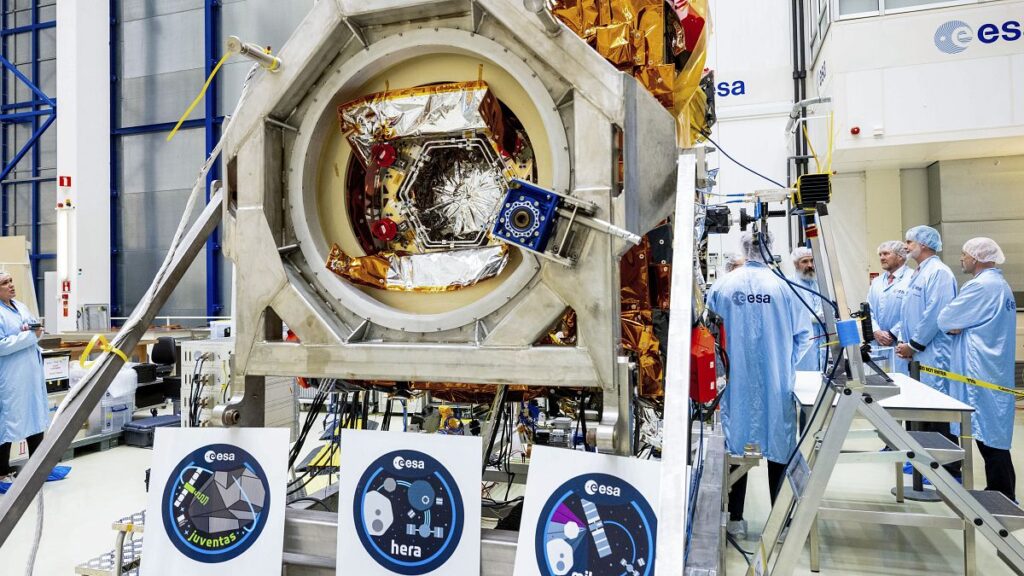Developed by ESA, the Hera probe took off on Monday October 7 to reach the crash site of the Dart probe caused by NASA on the asteroid Dimorphos.
Has NASA managed to deflect the asteroid Dimorphos in 2022? This is what the Hera probe will try to answer, after taking off this Monday, October 7, from Cape Canaveral, Florida, aboard a SpaceX Falcon 9 launcher.
The satellite was successfully launched after several days of uncertainty linked to weather conditions and while SpaceX, whose Falcon 9 had encountered a malfunction during its previous flightonly obtained the green light from the American authorities on Sunday.
Collect information on the formation of asteroids
The Hera mission will inspect the crash site of the DART probe on the minor planet Dimorphos caused by NASA in 2022 in order to divert it from its trajectory. The goal is to better understand the formation and composition of asteroids.
ERA’s mission, lasting 4 years
Developed by the European Space Agency (ESA), the project brought together 18 European countries and 70 companies from the continent.
Hera began a 2-year space journey. Traveling at 195 million kilometers per day, its arrival at its destination is scheduled for 2026. “This is the first planetary defense mission, but it is also the fastest planetary mission ever carried out in Europe so far, which is particularly necessary if we want to deflect an asteroid one day.” observes Michael Kueppers, Hera project scientist, ESA.
“A very strong signal for humanity”
The risk of an asteroid hitting planet Earth is among the least likely today. It is estimated that an object of one kilometer in diameter (triggering a global catastrophe like the extinction of the dinosaurs) could crash into the Earth every 500,000 years, and an asteroid of 140 m in diameter (the threshold of a regional catastrophe) every 20,000 years.
“We are tackling a problem, a natural risk that we can not only detect, but also prevent. And I think we are sending a very strong signal to humanity facing a risk that could be extremely remote. But if that happens, the consequences are global.” warns Ian Carnelli, Hera project manager, ESA.




